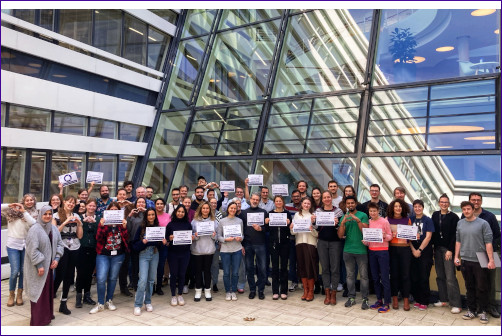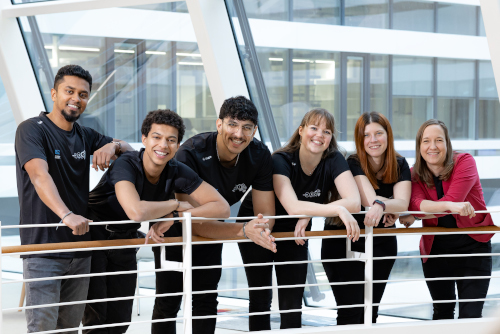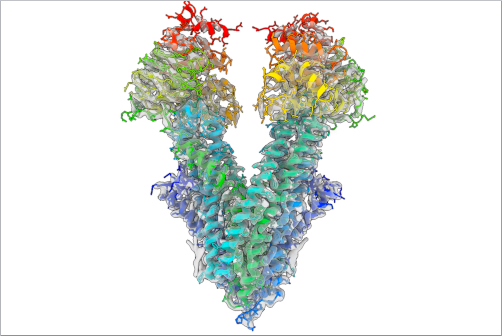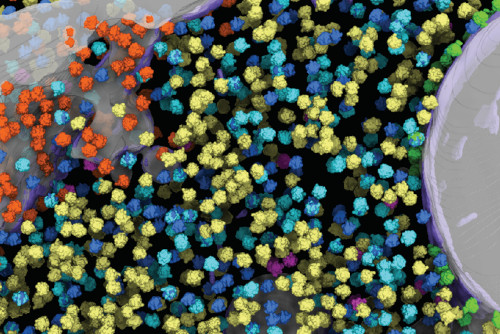Meet the Students who Attended the CSSB Spring School
From 13-17 April, seventeen PhD and post-doctoral students from across the globe attended the first CSSB Spring School “Structural Systems Biology – From Molecules to Organisms” on the DESY Campus in Hamburg, Germany. The Spring School, organized in cooperation with the Joachim Herz Stiftung, gave students the opportunity to strengthen their interdisciplinary skills and learn about advanced biophysical approaches for structural systems biology. “The CSSB Spring School provided students with a unique chance to explore the newest methods and approaches in structural and systems biology through a combination of lectures, demonstrations and practical exercises ” explains Jörg Lahban (CSSB, FZJ), who organized the school’s scientific programme.
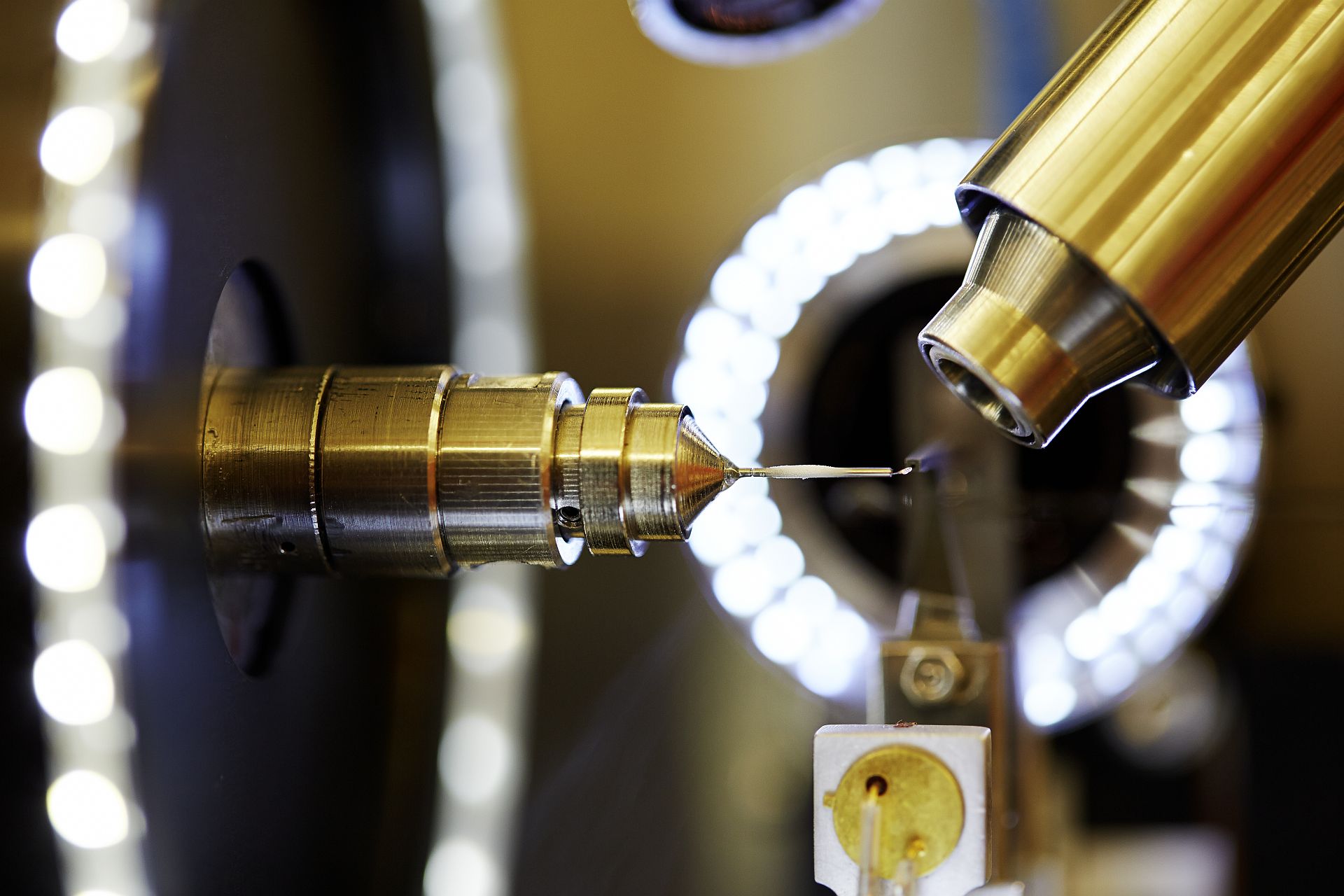
Meet the students
We reached out to three of the students to learn a little bit more about them and find out about their Spring School experience. Here’s what they shared with us ...
Valentina Arkhipova
Home Country: Russian Federation
Institute: Institute of Protein Research, Russian Academy of Sciences
What is the current focus of your research?
Our work is focused on structure-functional studies of a key component of the translation initiation system in Eukarya and Archaea – the heterotrimeric translation initiation factor 2 (e/aIF2), and its functional RNA-protein and protein-protein complexes.
What you enjoy most about the CSSB Spring School?
The School provided comprehensive introduction to the advanced biophysical approaches for structural biology. The lectures and tutorials were relevant and very helpful. Thanks to the saturated program we learnt a lot in a short space of time and spent relaxing evenings in friendly talks. It was a great pleasure to attend this School! I would like to thank organizers for hospitality, concern and interest during the School.
What did you learn at the Spring School that you will be able to apply to your own research?
Knowledge and skills in X-ray structure determination and structural modeling obtained during the School are very necessary in my work. I was also curious about single-particle CryoEM because this method allows for the determination of high resolution structures of macromolecules assemblies, especially of ribosome and its complexes with components of translation system.
At the School, I also learnt that Thermofluor assay is a useful technique that helps to optimize the protein sample stability. This method gives information that can be very valuable during protein crystallization. In addition ITC may be applied in my research for characterization of the thermodynamics of protein binding interactions.
Was this your first time in Hamburg? What did you enjoy most about the city?
It was my first visit to Hamburg. I was really fascinated by its beauty and friendly atmosphere. The abundance of canals and bridges, big ships in the harbour and reflection of city lights on the water left unforgettable pictures in my mind.
Tell us one interesting fact about yourself.
I like to travel and meet interesting people. I admire the sparkling in their eyes when people have an idea or a dream they live. Communication with new people often helps me to find answers to my own questions.
Arka Chakraborty
Home Country: India
Institute: Institut de Biologia Molecular de Barcelona (IBMB), Spain
What is the current focus of your research?
We are trying to find out the intricate details of packaging and maintenance of mitochondrial DNA from a structural biology perspective, using x-ray crystallography, small angle x-ray scattering (SAXS) as well as other biophysical techniques. Mitochondrial DNA and its proper maintenance is crucial for survival and proper functioning of our body cells and by looking at crystal structures of proteins involved in this maintenance in complex with DNA, we hope to understand the key mechanisms of packaging better, which will help us in better characterization of pathological states such as Parkinson’s disease, Kearns–Sayre syndrome (KSS) as well as aging.
What you enjoy most about the CSSB Spring School?
The central idea behind the organization of the CSSB Spring School was inspiring to me. During my doctoral studies one thing which has hit me time and again is that single technique based research will be dead in the water, simply because of the sheer complexity of the biological problems that we will be addressing. The way the CSSB Spring School provided a panorama of the different techniques that could be used to analyse biological systems at different levels of detail, as well as both theoretical and hands on sessions, it bolstered my ideas made me think that this is how I would like to explore biology. Exciting new advances like the X-ray Free Electron laser (XFEL) and the ‘resolution revolution’ in cryo-EM will transform the way we do structural biology in the very near future and this workshop was just the inspiration I needed.
What did you learn at the Spring School that you will be able to apply to your own research?
Techniques such as cryo-EM, cryo electron and x-ray tomography and Molecular Dynamics Simulations that were elaborated at the Spring School have immediate potential application in the type of problems that we are addressing in our lab and in my own research. The Spring School excellently pointed out the importance of long established inexpensive techniques like Isothermal Titration Calorimetry (ITC), while exposing cutting edge advances like XFEL at the same time, and I hope to use the latter in my research in the future.
Was this your first time in Hamburg? What did you enjoy most about the city?
This was indeed my first time in Hamburg. While I didn’t get much time to explore I enjoyed the onset of spring. Gobbling up fish delicacies at the harbour and relaxing in the sun was fun. The profusely blooming trees at the DESY campus were an exhilarating sight.
Tell us one interesting fact about yourself.
In my spare time I listen and practice music. Finding out more about ‘jazz devices’ and applying them vocally is an exciting pass-time for me (my neighbours can give you better details).
Kun Yu
Home Country: China
Institute: CSSB, Forschungszentrum Juelich (FZJ)
What is the current focus of your research?
The current focus of my research is "Characterization of the human membrane protein gamma-Secretase Complex".
What did you enjoy most about the CSSB Spring School?
I learned a lot from the discussions with professors and other students about the problems we encountered during the practical course or during our own research. It was a great atmosphere for communicating and sharing: new techniques, fresh ideas, successes and failures.
What did you learn at the Spring School that you will be able to apply to your own research?
We got detailed instructions about every available facility on the DESY campus for structure biology. Since my work is still focusing on protein purification and crystallization, I have no experience with data processing or further modelling steps. This school gave me access to almost every available and necessary procedures for structure determination in such a few days, which I will certainly need in the future!
Was this your first time in Hamburg? What did you enjoy most about the city?
No, I have been in Hamburg for 2 years. As a foreigner, I really enjoy the international atmosphere of the city.
Tell us one interesting fact about yourself.
When I freshly came aboard 2 years ago, I was told it was possible to make fried noodles with spaghetti, so I tried. I put oil and spaghetti (raw) directly into the fried pan... to make the noodle soft, I used my experimental intellect, adding almost the whole bottle of oil to cover it...until I called my colleague complaining that it could not work and told him what I had done...
